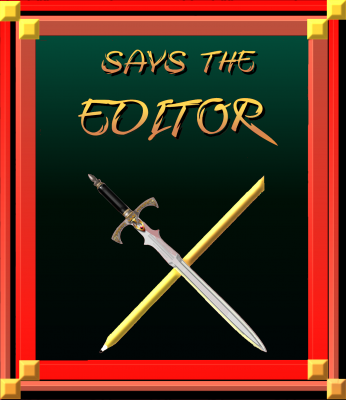August 12, 2021
 Counting? Like the Count on Sesame Street?
Counting? Like the Count on Sesame Street?
YES.
Here’s the deal, because you know there is one, and you know it’s sticking in my craw and making me cranky.
Increasingly often, I’m running into writer’s groups full of authors who get busy counting the number of times they use a word in a manuscript. And then… they obsess over that number, like they are afraid they are over the magic threshold and if they can’t get under it, their book is going to suck.
“I have used THAT sixty-five times in 60,000 words! Is that too many?”
I alternately want to slap and/or shake these people and wrap my arm around them and say, “Honey. Relax.”
Because you know what? There is no magic number.
Like so much else in the craft of writing, the counting of specific words doesn’t matter (and is potentially a waste of time, even if you run that cute little feature in Word that tells you how many times you’ve used a word and really, how much time does it take and what’s the big whoop, Sooz? The big whoop is the mental space you’re diverting from the actual job at hand). What matters is nuance. How it sounds. How it works on the page. What it brings to the story, how it operates, how it enriches.
See how those are all positive things? Not a negative among them.
That’s because the instant the negative shows up, you’ve overused it. That can be the second time you’ve used it, or it can be the thirty-fifth, or it can be the seventy-second. Or it can be the two hundred and ninth.
It’s about how you use a word. Period. There’s no magic to that; it’s craft. It’s hard work. It’s reading your prose out loud to yourself, or using a text-to-voice program or whatever you need to do in order to let your ear hear what your eye may not see. It’s listening. It’s taking the time to write, rewrite, resculpt, reimagine how to say something if need be.
Stop counting. Start listening.
As always, feel free to drop me a line if you’re struggling. I’m booked up for a few months right now, so you’ll have to wait. But who cares? I’m worth the wait.
May 20, 2021
 Here’s a good one for you. At least, it’s a story that ends with me grinning in pride at my clients. It’s a story of lessons learned.
Here’s a good one for you. At least, it’s a story that ends with me grinning in pride at my clients. It’s a story of lessons learned.
There’s a tendency among writers to basically disembody a character’s parts from the whole. He reached with his hand. Or Her eyes ran across the faces of the people in front of her.
It’s a problem on many fronts. And it’s one I always ask my clients to be aware of. The body works as a whole, after all. And eyes don’t run or slip or do many things other than see. (Note the many other here, as I know a couple of those legit other things personally.)
While working on a manuscript a few weeks ago, my client left me a note. I know this disembodies his hand, but I didn’t know any other way to word it. Help?
I… jumped for joy. I did! THIS is what makes the editor-client relationship so amazing. When I can say, “Lessons learned.” When I know my clients listen to my words of (hopeful) wisdom and realize they’re there to help improve your craft. Because really? That’s the best part for me.
Oh, don’t get me wrong. It’s gratifying when clients come back with manuscript after manuscript. Bring it. I love long-term clients maybe a little more than I love one-book wonders. I love the chance to get to know an author’s writing (and, often, the writer themselves, but that’s up to the writer), and the chance to go deeper in my work with it.
Lessons learned with this one.
Don’t disembody your characters. But most of all?
Ask for help when you need it. This is what I’m here for, after all. To be your helper, your ally, the one you can show your uncertainty to. I’m here to help you work through it, grow, improve, excel.
Lessons learned?
Hope so!